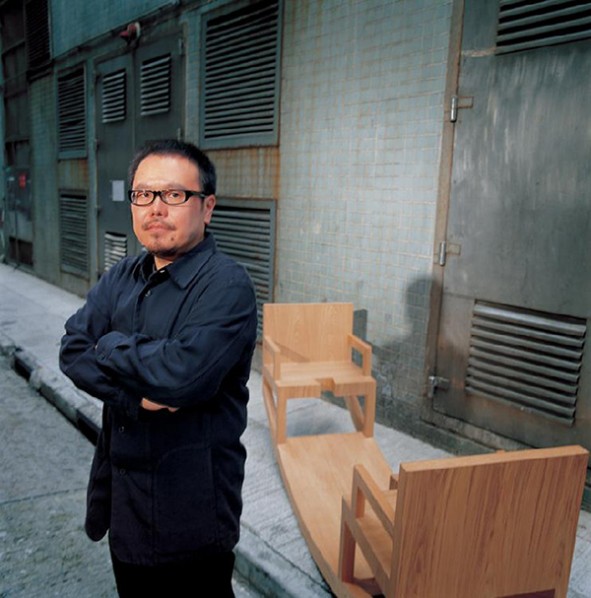
The lecture “From Design to Industry: Lau Siu Hong (Freeman Lau) Talking about Creative Disciplines of CMYK” was held at the first floor red chair lecture hall of Building 7, in CAFA on January 9th, 2013. Lau Siu Hong, a renowned Hong Kong designer, founder and partner of Kan and Lau Design Consultants. His designs have influenced the market, times and society mainly due to his creative ideas, winning more that 300 awards at home and overseas. He achieved one of his milestones by designing the Watson’s Water Bottle which was later awarded the international “Bottlewaterworld Design Awards”(2004) and he is often considered a brilliant star in the Chinese realm of design.
The lecture was presided over by Professor Song Xiewei, Deputy Dean of the School of Design, CAFA, he briefly introduced Lau’s experience and winning awards before the speech of the guest, it was divided into three parts: firstly, Lau won the “Ten Outstanding Designer Awards”, which perfectly proves that he has a comprehensive influence on the life of Hong Kong within design, secondly, he has a lot of public duties such as Vice Chairman of the Board of Hong Kong Design Centre, which shows his authority in the design community in Hong Kong, thirdly, he fosters a large number of outstanding young designers, which is a great contribution to the development of the future design industry. Professor Song also pointed out that the development of design ideas in Hong Kong had an influence on the mainland, and they should learn from each other, working together to promote a creative culture in China. Lau initially explained the main implication of CMYK, which is used as the mode of printed color, is a product of color, relaying the reflective principle, CMY is the combination of the first letters of the three colored printing inks: Cyan, Magenta, and yellow, and K is representative of the last letter of back. Lau started to work in printing by himself in the 1970s and 1980s, and it can be said that his design road originated from CMYK.
[gallery link="file" order="DESC" orderby="title"]
Afterwards, he introduced his selected designs in the last two decades, as well as the creative industrial activities which he engaged in. In the 1990s, his works were mainly two-dimensional, and he proposed a profoundly philosophical thought that “the problem of Hong Kong identity”. The sovereignty of Hong Kong was returned to China from UK, which led Hong Kong people to look for a sense of belonging at the end of the century. When stepping into the 21st century, he begins to devote to the field of production design, he was committed to transforming design into an industry. He invited twelve world famous Chinese designers to co-design a set of twelve Chinese Zodiacs, respectively finishing a design of the Chinese zodiac, then it was produced into sculptures, gift boxes, jewelry, and toys that were sold in the exhibitions, it was a successful practice that transferred the design to a industry. When he designed Watson’s Water Bottle, he also invited twelve artists from different fields to respectively and freely design an illustration for a bottle, which was represented one of the twelve months. Starting from the multicultural perspectives of young people, the twelve letters of “Watson water” are designed specially, so the brand image of Watson strengthened. Water bottles become the smallest and most popular “public art spaces”, featuring the mixture of the oriental and the western, as well as the diversified and flexible urban culture in Hong Kong. In addition, Lau was also involved in the production design and logo design for many brands, such as Li Ning, Ordos, 1436, and Canon, etc., during the course of his design practices, he has always practiced his design ideas to attain real industrial value, and he has worked on this until today.
Finally, Lau briefly introduced his design of a series of chairs to the audience, he treats chairs as symbols that express his own real inner emotions, and add a lot of Chinese classical cultural elements, such as Yin and Yang, brushstrokes and calligraphy, etc., leading viewers to appreciate the original intention and expression of the designer when they experience production.
Students were very enthusiastic to ask him questions during the Q & A session, focusing mainly on the future development of the design industry, and the confusion of young designers in the way of design. Lau patiently answered all, and suggested that students should practice more, and the more competitions one participated the better, students should see competitions as a means of improving their design levels, rather than destinations. They should commit to convert design into production, melted into industrial development, leading to a win-win for design and industrial value.
Text by Chen Yajing and translated by Chen Peihua/CAFA ART INFO




























